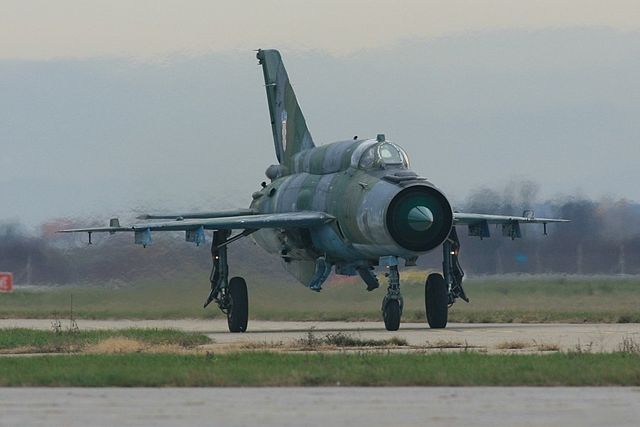
Image by Goran Novačić
Please Follow us on Gab, Minds, Telegram, Rumble, Gab TV, GETTR
Recently, the Croatian military decided to choose the French Dassault Rafale for its multi-role fighter jet. The twelve Rafale planes will replace Croatia’s Russian-made MiGs in the country’s biggest arms purchase since its 1990s war of independence from Yugoslavia. The EU member chose France’s package over bids from Israel, Sweden and the United States, and expects to get the first six planes by 2024. For years, too little money has been invested in the Croatian army, and the air force has been almost shut down. Croatia spends slightly less than $1 billion each year on defence, according to NATO figures, falling just short of the alliance’s recommendation that members spend two percent of GDP.
The information that Croatia is buying French Dassault Rafale fighter jets resonated strongly in the region. One should know the choice of fighter jets is not just a matter of buying a piece of military equipment, but is itself a message about the long-term selection of a strategic partner. It is certain the news Croatia did not choose the American F-16 Falcon will not be viewed favorably in Washington. A lot of signals were sent the French Rafale would be chosen. The first was the sudden appearance of France in the second round of competition for the selection of a Croatian war plane. In the first round, when the Israeli F-16 Barak was chosen, the French did not compete at all. It should be added the Croatian competition was the first in which France offered used aircraft. India, Qatar and Egypt, former users of Rafale, exclusively purchased new jets. Everything indicated the choice of the plane had been agreed upon earlier.
Despite the political significance of the decision, its financial significance is also extremely important, especially for a small and economically weak country such as Croatia.
It should be said that both the American F-16 Falcon and the French Rafale are fantastic fighter planes. Either of these two aircraft represents a quantum leap for the Croatian Air Force, which operates planes which had their zenith in the 1960s. Today, the US is the largest donor of weapons and military equipment to the Croatian Army; that’s why this purchase is not the most convenient.
As early as December of last year, when the first hint appeared the Croatian state leadership preferred the French product, there was also rumors of concluding a “deal of the century” with the US.
Namely, the US Agency for Defense and Security Cooperation (DSCA) approved the Croatian procurement of 76 Bradley armored vehicles and several thousand TOW anti-armor missiles. The entire deal is valued at $ 757 million. It is clear that the Bradley purchase was compensation for the Americans.
The sale of fighter jets is important for France, not just for financial gain. After Britain left the EU, France remained the only member state to possess nuclear weapons. It is now important for the French to bring together as many EU members as possible into the project of building a European defense system.
The 12 fighter jets and the initial weapons package will cost Croatia $1.2 billion. It is unlikely the American offer would be cheaper than $1.5-1.6 billion. The essential difference is the method of payment. American jets needed to be paid in advance and then wait a minimum of five years for aircraft to arrive from the factory. Since the MiG-21 jets will be grounded by the end of 2023, Croatia would be without a fighter aircraft for more than three years if the F-16 Falcon was chosen. The French state, on the other hand, offered payment in installments over several years.
At this moment, the Croatian state budget would not be able to withstand a one-time payment of $1.5 billion for a squadron of fighter jets. But with payment in installments, even up to ten years, Croatia can survive economically. It is the same with paying for the modernization of the Bradley, which will be accomplished in series, because Croatia simply does not have the financial strength for an entire overhaul and equipping at once.
The very procurement of new jets has brought to the fore another problem the Croatian Air Force has been facing for years – the lack of pilots and technicians. Although some pilots will be educated in France, this is not and should not be a long-term solution. Also, with the arrival of the Rafale, the Croatian Air Force will have to forget about one experiment bordering on insanity — namely, Croatian pilots are one of the few in the world, if not the only one, who jump from the turboprop Pilatus to supersonic fighter jets. This has somehow worked with MiGs, but it will by no means not work with 4+ generation jets. The long-term solution for Croatia would be to procure at least 4 jet training aircraft on which future pilots would be schooled after completing Pilatus training.
In any case, despite the problems, with this purchase Croatia will upset the balance of military forces in the region. So far, Serbia has been militarily superior to Croatia, but there have been regular complaints from Croatia and announcements they want to change this reality. With the announced new weapons arriving in the Croatian Army, this will be done. However, in the last few years, Serbia has been investing significant sums of money in the purchase of new weapons. So it is logical to expect that Serbia will soon give an adequate response. In any case, a mini-Cold War is currently going on in the Balkans.

